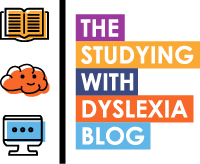Last week the British Dyslexia Association announced that the Joint Council For Qualifications have made the process of applying to use a reader or assistive technology in examinations much easier. So what has been changed and what do some SENCO’s think about those changes?
John writes….
The British Dyslexia Association and the Joint Council For Qualifications have been working together to simplify the process of helping to secure a human reader or the assistive technology equivalent for a child with special educational needs (including dyslexia) in exams.
For some children and young people with dyslexia, being under exam conditions causes undue stress and anxiety as they are under pressure to read lots of text within a time-bound period. Challenges with the speed of processing questions, trying to physically read text and memory, whilst difficult enough on a day-to-day basis, can be often much worse when under exam pressure. These needs are often exacerbated due to anxiety.
One of the challenges in getting support has been the form filling required to be able to have that support in place in an exam scenario, therefore in making the process of application simpler, SENCOs will be able to make more of an impact in supporting pupils with these needs under exam conditions.
The BDA made the following comments about the changes:
“The removal of the need for assessment evidence and the completion of Form 8 for this access arrangement is a sensible and pragmatic approach by JCQ that will encourage schools and education providers to maximise their use of technology, levelling the playing field for dyslexics in education.
It is hoped that the change will encourage more schools to invest in providing laptops for dyslexic pupils, establishing text-to-speech technology as part of their normal way of working. This will mean the dyslexic pupil can take advantage of these changes, reducing the administrative burden on the school and the cost of providing a human reader. Using such technology enables the pupil to gain independence and reduces the stigma of having to rely on others to access the written word.”
CEO of the BDA, Helen Boden, said the following about the changes:
Helen Boden, CEO The British Dyslexia Association.
“This announcement is great news for young people with dyslexia and schools. It is simpler whilst maintaining standards and is more reflective of the world of work.
Being able to use computer technology more easily in exams we hope will see it become more mainstream, embedding technology in all educational settings leading to greater equality and higher attainment levels for those candidates with learning difficulties like dyslexia.”
So how has this news been received by SENCOs?
Of course, the schools across the UK are enjoying their summer break but I was able to contact a couple of specialist teachers from the Cadogan Learning Centre at St David’s College in Llandudno, a leading mainstream independent school known for it’s high standard of dyslexia provision.
“This is good news. This will save us time and allow us to process some of the pupils’ access arrangements more quickly. From our side, it means that instead of filling out a long form, we just add a ‘file note’ on headed paper, stating that they have a diagnosis, how this affects them and what is their normal way of working. We still need to fill in the first parts of the form 8, but it will save on testing time. ”
Faye Favill, SENCO, The Cadogan Centre, St David’s College
“Interesting update re the access arrangement administration changes and the form 8.
However - my main concern re access arrangements is not that for the use of readers and scribes. I want our pupils to have their normal way of working to be using assistive technology to read and voice recognition to dictate.
This is made difficult by the fact that exam papers are pdfs - notoriously difficult to get decent voice technology software to read the text - especially if the papers are opened in an exam portal on the pupils laptop with no internet access and therefore no access to the Microsoft learning tools and the edge reader.
I would like the BDA, JQC and Microsoft look into this and offers schools advice.”
So at first glance, it would seem that the announced changes are a positive step in the right direction in empowering young people with dyslexia and other SEN as they take exams. It would seem that there are definitely more steps that need to be taken to deliver a more comprehensive approach in exams in terms of support for dyslexia.
My thanks go to Faye Favill and Lisa Parry for taking the time out of their summer break to comment on these changes.






